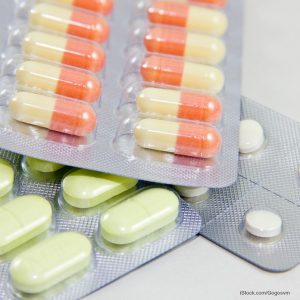On Friday, April 13, 2012, Food Poisoning Bulletin attended a webinar organized by STOP Foodborne illness. The featured speaker was Tyler Smith, Senior Research and Policy Assistant at Johns Hopkins Center for a Livable Future (CLF). He spoke about the responsible use of antibiotics in food animal production.
 There are three ways that antibiotic use in animals is controlled:
There are three ways that antibiotic use in animals is controlled:
- Regulation. This legally binding and enforceable action by the government can be used to control how and when antibiotics are used to treat food animals.
- Guidance. The FDA or USDA can issue a “guidance document”, which sets out the parameters for ‘judicious use’ of antibiotics. These non-binding recommendations try to persuade drug companies to voluntarily change their approvals.
- Litigation. A lawsuit can be filed against the FDA and a judge can force the agency to make changes in its regulations.
Antibiotics are used in several ways in farm animals. The animals are dosed when they exhibit signs of an infectious disease, to stop the spread of an infectious disease, and for growth promotion and disease prevention, also called ‘sub-therapeutic dose’. The last measure is considered a misuse of antibiotics and is likely responsible for the increase we’ve been seeing in antibiotic-resistant bacteria.
Animals raised in CAFOs (concentrated animal feeding operations) are usually given antibiotics to prevent disease. These conditions are often overcrowded, putting animals in direct contact with waste. That makes them more susceptible to infectious disease. Smith said that the “responsible use of antibiotics is to give them a full dose for a short time period to prevent the spread of a specific infectious illness, not a ‘sub-therapeutic’ dose over their lifetime to prevent any disease.”
The animal agriculture industry uses 28,808,024 pounds of antibiotics every year, or 80% of all antibiotics sold, according to 2009 data. We don’t know how much of this use is responsible use. But we can estimate it, according to Smith.
FDA data states the percentage of antibiotics are used in feed or water; that is how herds are given sub-therapeutic doses. “Ninety percent of all antibiotics given to food animals are formulated for use in feed and water,” Smith said.
There has been more than 30 years of FDA inaction on this topic. In 1977, the FDA started to withdraw approvals for penicillin and tetracycline in animal feed because it was ‘no longer shown to be safe’ under the Food Drug and Cosmetics Act. But the FDA backed down under Congressional pressure. The FDA never rescinded its findings. Since then, the FDA has tried voluntary reform through issuing guidance documents, which has not worked.
A question was asked: “What was the ‘congressional pressure’?” Smith said, “In 1977, the FDA issued a notice of opportunity for a hearing. They set forth evidence regarding the danger of sub-therapeutic antibiotic use. The drug companies that manufacture the drug requested a hearing. Then, the member of Congress on the Appropriations Committee for the FDA that were friendly to the drug industry put language in the appropriations bill that made it appear that the FDA was ‘playing with fire’ and there ‘may be consequences for its budget’ if the FDA didn’t back down. They probably took the politically astute path in 1977 and then they sat on their hands for the next three and a half decades.”
So the FDA issued ‘Guidance 209’ in early April 2012, which requests that industry use antibiotics in farm animals for treatment, control, and prevention of disease, but not to use them for growth promotion.
On March 22, 2012, Federal Judge Theodore H. Katz granted a summary judgment to the National Resources Defense Council and others who had sued the FDA to regulate antibiotic use. The judge ordered the FDA to restart proceedings to withdraw approval for antibiotic use unless the drug manufacturers can provide evidence that the use of those drugs is safe. Now, there will be a series of notices, hearings, and appeals over the next few years.
Smith said that legislation has been proposed to move this issue forward. In the House, H.R. 985, sponsored by Rep. Louise Slaughter (D-NY) is called the Preservation of Antibiotics for Medical Treatment Act (PAMTA). This bill is S. 1211 in the United States Senate, sponsored by Senator Dianne Feinstein (D-CA). “The bill shifts the burden of proof for withdrawal to drug companies, forcing them to prove that the use of drugs is safe, and phases out growth promotion and disease prevention sub-therapeutic use,” Smith said. But, he added, “things don’t look good right now given the current political climate in Washington D.C. We’ll probably have to wait for another Congress.”
Smith said that consumers can choose meat that is labeled organic, since that implies no routine antibiotic use. But Smith added that “the risk involved in eating organic meats versus conventionally-raised meats isn’t all that different. Drug resistant bacteria have been found on organic as well as conventional meat, likely because of cross-contamination at the slaughterhouse.”
He ended by saying, “In order to solve this problem, we can’t be ‘to each his own’. A public policy solution is needed, with regulators and regulations.”




